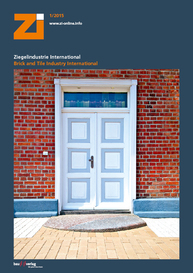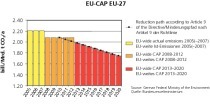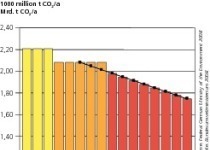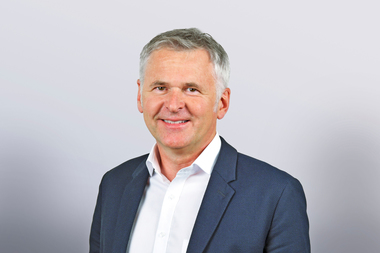European Council passes 2030 Climate and Energy Framework
In October 2014, the EU Council adopted the 2030 Climate and Energy Framework, the goals of which provide a framework for the climate and energy policies of the European Union through the year 2030.
A binding greenhouse gas reduction target of -40% (1990-2030) was specified, and a target of at least 27% was set for renewable energy by 2030, based on end-use energy consumption. An indicative (one might also say non-committal) target increase of 27% was also established for energy efficiency, as compared to present projections on how energy consumption would probably evolve if no such objectives were defined. The overall goal of 40% less greenhouse gas emissions is to be achieved by way of a 43% reduction in emission trading system (ETS) between 2005 and 2030. By way of comparison: the current target amounts to only -21% (2005 to 2020). Emissions from sectors outside of the EU ETS are supposed to decline by 30% (2005 to 2030). The linear reduction factor for emissions trading will increase to 2.2% per year beginning in 2021 (over the current 1.74% per year through 2020). Carbon leakage will still be allowed, although certain details such as the length of the list, the definition of benchmarks, etc. are to be refined and improved.
Independently of the Council decision, a so-called market stability reserve was planned for the 4th and all further trading periods in order to increase the cost of allowances. Beginning at a certain level of surplus, the auctioned volume is to shrink automatically and, conversely, increase again when a certain level of scarcity is reached. The draft bill is scheduled for the next legislative process regarding emissions trading in 2015. Step by step, the objectives of the 2030 Climate and Energy Framework are to be passed to law via, for example, a revised emissions trading directive.
Whether or not the Council decisions of this last October will be susceptible to relatively easy alteration by way of the Council‘s right of co-determination remains a matter of controversy. According to some experts, that would be acceptable in the sense of a power of veto, while others are convinced that it would not work.
The emissions trading directive provides for revision of the carbon leakage status at five-year intervals. The first such revision has already taken place and will be effective from 2015 through 2019. The new carbon leakage list was also published. Thanks to a qualitative study prepared by Price Waterhouse Coopers on behalf of TBE – the European Roof Tile and Brick Manufacturers Association, the brick and tile industry (NACE 23.32) is again listed as “at risk of carbon leakage“.
Katharina Armbrecht
Bundesverband der Deutschen Ziegelindustrie e.V.
www.ziegel.de






